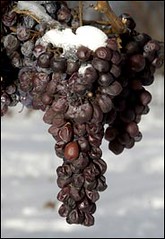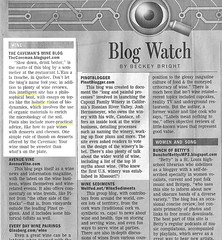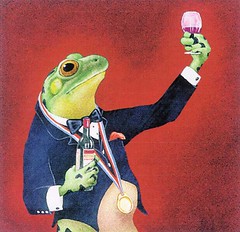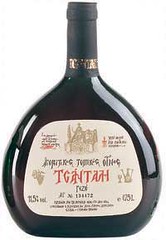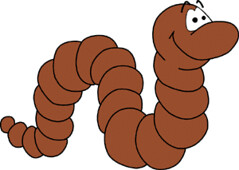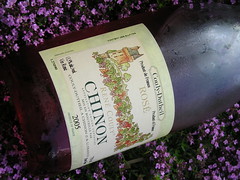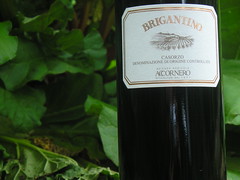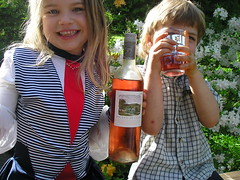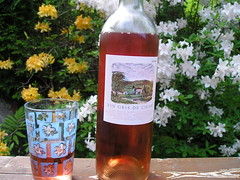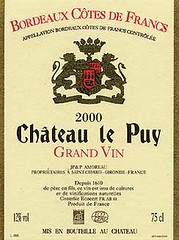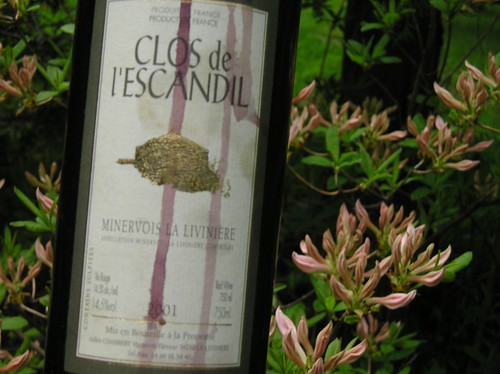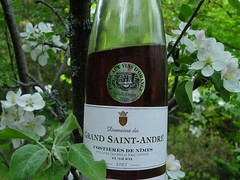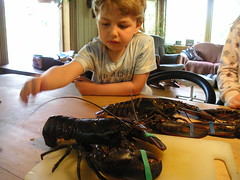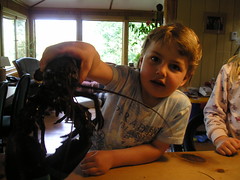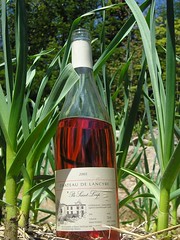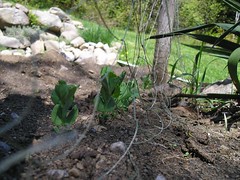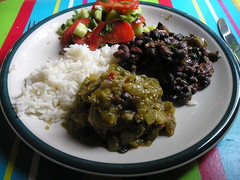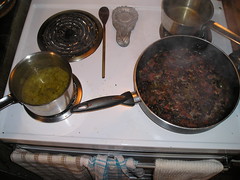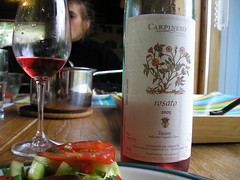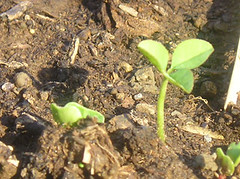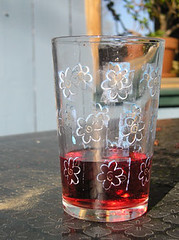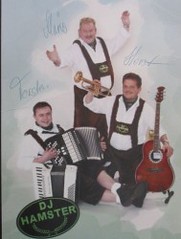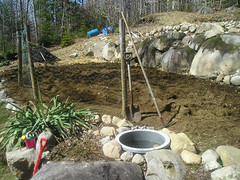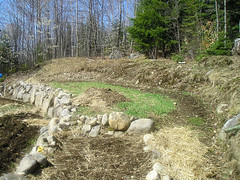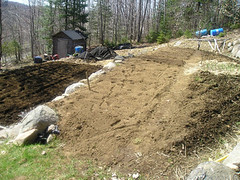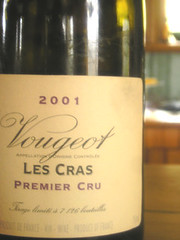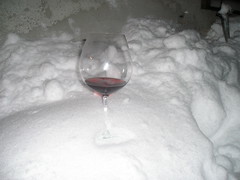 Look What’s Growing in Our Own Backyard
Look What’s Growing in Our Own BackyardModern winemaking in Europe dates back hundreds of years. California and Ontario’s first vines were planted in the late 19th Century. Here in Québec, our viticultural history takes us back only to the early 1980’s. With age comes experience, each generation passing down to the next not only more mature vines, but of even greater importance, the know how which only comes from the trial and error of experimentation.
As a wine buyer, my job is to be a ruthless critic. With so many wines on the market it is easy to be swayed by prejudice, damning an entire group of wines due to a couple of bad experiences and never returning. I admit to having relegated Québec’s wine industry to that scrapheap of mediocrity. I was wrong and am here to make amends.
At the root of this bias are the grapes themselves. Grapes like chardonnay, shiraz and cabernet sauvignon are of European decent, varietals of the Vitis Vinifera family. Our harsh winters and relatively short growing season once limited our options to the hardier, though often less interesting hybrids. But things are changing. Global warming has proven to be a blessing for Quebec winemakers as the extended growing season and milder winters have allowed for not only riper hybrid grapes, but an opportunity to grow chardonnay and other classic Vinifera species.
I recently toured a number of wineries in the Eastern Townships and was shocked by not only the quality and diversity of the wines being made, but by the passion and dedication of a number of our winemakers. Here are the stories of four of the best.
The Pioneer- Charles-Henri de Coussergues and Orpailleur
1086 Route 202, Dunham
www.orpailleur.ca/Québec’s first and best known winery, Orpailleur represents the old guard of Quebecois winemaking. When one talks with other winemakers, there is nothing but respect for what de Coussergues has accomplished. While he sees an opportunity in planting vinifera grapes like chardonnay, he continues to concentrate on the tried and true, with large plantings of hybrid white grapes seyval and vidal, seyval noir and marechal forch in red. The wines are also classic interpretations of the varietals; crisp whites and red berry laden reds and rosés. Of exception is his La Part des Anges, a fortified wine which was inspired by the wines of Maury in France’s southwest (see tasting notes at end of article).
Aside from running his vineyard, he is working to create a regulatory body similar to VQA (Vintners Quality Alliance) which presently overseees the wines of Ontario and British Columbia. The VQA works as a regulatory body whose aim is to create standards of quality, auditing winemakers to assure that what is written on the label matches what is in the bottle. An auditing system such as this would assure, for example, that the grapes did indeed come from Quebec and were not brought in from outside the province.
The Ice Master – Jean Joly at Le Marathonien
318 Route 202, Havelock www.marathonien.qc.ca/
Gold medals and awards are nothing new for Le marathonien. Most recently, Le Marathonien was the highest scoring ice wine at the prestigious 2006 Okanagen icewine festival in British Columbia, besting even the fabled icewines from the Niagara.
To make icewine, a winemaker needs an extended period of minus12C temperatures. While the milder winters of the last couple of years are causing headaches for many of Ontario’s icewine producers, the combination of riper grapes and our province’s frigid winters are ideal for the production of icewine. At least in the short term, this just might be the style of wine which might win worldwide recognition for our wine industry.
Le Marathonien is a converted apple orchard. Joly’s vines are planted in the gravel and rock that 12000 years ago was a part of lake Champlain. His approach to winemaking is rigorous, scientific and patient. While many of his colleagues are experimenting with different grape varietals and vinification techniques, Joly, like de Coussergues, is sticking with what has proven to work
Joly produces classic dry whites and reds, including a superb off-dry white made with a riesling hybrid called geisenheim. But Marathonien is all about sweet wines. And if Icewine is a bit rich for your palette, Joly is one of the few Quebecers to produce a Late-Harvest wine, which is in fact a second press on his icewine grapes.
The Cradle of Invention– Mike and Veronique at Les Pervenches150 Boulais Road, Farnham
www.lespervenches.com/‘Who says Vinifera doesn’t grow in Québec,’ beams Mike Marler with as he rips away some leaves, revealing a beautiful cluster of chardonnay. Talk with Mike about his grapes, or how the various soil substructures found in his vineyard can produce subtle differences in aromas and flavours, and one gets a deeper understanding of the relationship a winemaker has with his vines.
The biggest impediment to growing many Vinifera grapes in Quebec is not the length of the growing season but the damage caused by our cold winters. Many point to Mike’s work with testing different materials and methods of winter protection as advancing the possibility of chardonnay in Quebec, and as proven by his medals and other accolades, this possibility has become reality. He is also presently in pre-certification with Ecocert, an international organic accreditation body, which will make Les Pervenches one of the few certified organic vineyards in Québec.
His wines mirror his experimental approach, and as we tasted barrel samples from last years harvest, one gets the sense each blending season is all about possibility and experimentation, not following a recipe. He is presently testing which grapes work best with American and French oak barrels, how the seyval grape reacts to different yields, and trying unique blends like in his award winning chardonnay-seyval, and one of my favorites, a light red blend of hybrid grapes frontenac and de chaunac with chardonnay.
A True Modern Winery - Léon Courville and Domaine Les Brome285 Brome Rd, Lac Brome
http://www.lespervenches.com/Ex-President of the Banque Nationale, Léon Courville began planting his vineyard in 1999. Domaine Les Brôme is a well financed, modern winery and is on the cutting edge of Québecois viticulture. With over 40 000 vines planted which include proven hybrid grapes as well as chardonnay, pinot noir and reisling, Courville seems to be well en route to proving that Québec can produce high quality wine which can compete on an international level.
As one of the big winner’s at the recent Coupe de Nations de Quebec, which recognizes excellence in both local and international winemaking, I came to Les Brome intrigued and left astounded. Courville is so confident about his wines that he was not simply content to just have me taste his wines, he wanted me to compare them with classic French bottlings which were at times more than twice the price.
First up was an off-dry vidal, a grape which is almost always reserved for making sweet wines. I tasted it next to a pinot gris from Alsace and the similarities were remarkable. His cuvee Charlotte, a blend of seyval, geisenheim and chardonnay held it’s own against, and I am not kidding, a Meursault.
For those who doubt that Quebec can produce high quality, elegant red wine has not tasted the de chaunac reserve. With help from Madiran winemaker Alain Brumont, Courville has perhaps found a home for this French hybrid, a grape that was developed in the 19th Century. Still in barrel, I tasted both the 2004 and 2005 cuvées which were overflowing with sweet field berries, a touch of licorice and mineral notes, all supported by a delicate tannic structure.
The Problem
Never heard of these wineries? Don’t feel bad because neither have most Quebeckers. Small-scale winemaking is a costly proposition anywhere, and because of the extra work required to ‘winterize’ our vines, even more costly here in Québec. Unfortunately, the SAQ has done little to help our industry by employing the same purchase policy they use on wines imported from outside of Québec, nor offering preferential displays in the stores. This means that Quebec wineries must sell their wines at uncompetitive prices at the SAQ or lose thousands of dollars of much needed revenues. With no shop window except for at the winery, the majority of consumers don’t have access to these wines, thus hindering sales and ultimately the evolution of the industry here in Québec. It’s a case where everyone loses.
Tasting Some of Quebec’s Best
Seyval 2005, Orpailleur ($12) Reminiscent of a Muscadet, this is a classic interpretation of the varietal, combining mineral notes with a bright acidity and citrus flavors. It would work wonders with oysters, mussels, a light fish or a fresh goat cheese.
Rosé 2005, Orpailleur ($13) combines classic red berries with a hint of spiciness alongside a well-balanced acidity. Soft and delicate, it is a perfect apertitif wine or to accompany a light lunch.
La Part des Anges, Orpailleur ($13..200ml). My favorite from Orpailleur, this blend of unfermented seyval juice with Brandy is left in open casks for 6 years endures a cycle of baking in the sun and then sub zero winter temperatures. The result is a reminiscent of a sweet sherry with a sensual mix of hazelnut, fig, and caramel. Try it with a crème caramel or with a selection of stronger cheeses.
Cuvée Speciale, Marathonien ($11), an excellent white, off-dry blend of Geisenheim, Seyval and Cayuga. Aromatic like a Muscat, the touch of residual sweetness balances the acidity to make an excellent ‘vin de soif,’ perfect for a hot afternoon or any meal with exotic spices.
Vidal Icewine 2003, Marathonien ($50 for 375ml) His icewine undergoes a long, slow fermentation and is only bottled when Joly feels it is ready. Each sip of is a decadent explosion of apricot, peach, and apple smothered in honey. With a fois gras, it makes a wonderful home grown alternative to Sauterne.
Seyval-Vidal 2004, Les Pervenches ($14) A touch richer and with less acidity than the Seyval of Orpailleur, this oak aged Seyval would be perfect for a light fish or a cheese fondue. It should have even more body in the 2005 version as it will be blended with Chardonnay rather than Vidal.
Chardonnay-Seyval 2004, Les Pervenches ($20) A Macon style Chardonnay that combines nice mineral notes with apples and peaches, all backed with soft, unobtrusive oak. It would work well with any seafood, especially when served in a cream sauce.
Solinou 2005, Les Pervenches ($14), a bright and refreshing red that exudes fresh summer berries. Composed of frontenac, de chaunac, with a touch of chardonnay, serve it chilled as an aperitif, with cheese and pâtés or with a spicy vegetarian dish.
Vidal 2003, Domaine les Brome ($15) Floral and mineral notes, a hint of residual sugar and a rich, and delicate texture make it a perfect match for a nice spicy seafood dish, I kept thinking shrimps with a green curry sauce.
St-Pépin Reserve ($19) is an extremely elegant white that combines delicate floral and exotic fruit aromas with an almost Burgundy type richness that comes from being ermented and aged in new French oak barrels. It would be great with a seafood risotto.
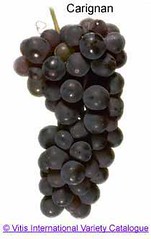
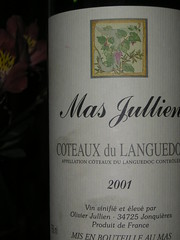
 w wines from the region. This was my fourth bottle (I still have two left).
w wines from the region. This was my fourth bottle (I still have two left).